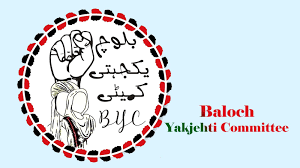A rights movement demands more than just tweets and posters, it demands leadership, presence, and action.
The arrest of Dr Mahrang Baloch and Sabghatullah Shah Jee under the Maintenance of Public Order (3MPO) law in March marked a turning point in the already fragile political atmosphere of Balochistan. Since then, there has been a dramatic uptick in enforced disappearances across the province, raising fears of a renewed state crackdown on Baloch activists reminiscent of earlier eras of repression.
For many in Balochistan, the current situation echoes a painful past. The last major wave of abductions and extrajudicial actions came between 2008 and 2013, during a previous Pakistan Peoples Party (PPP) government. Ironically, it is once again a PPP-led government under which reports of abductions and targeted killings have intensified. The party’s history in Balochistan is fraught; it was the PPP founder Zulfikar Ali Bhutto who ordered a military operation in the province in the 1970s, deepening the rift between the Baloch population and the Pakistani state.
In this charged climate, attention has shifted to the Baloch Yakjehti Committee (BYC), once regarded as the most dynamic civil resistance group in the province.
The arrest of its most recognisable face, Dr Mahrang Baloch, has not only deprived the movement of leadership but also seemingly paralysed its ability to respond to fresh provocations.
The arrest of its most recognisable face, Dr Mahrang Baloch, has not only deprived the movement of leadership but also seemingly paralysed its ability to respond to fresh provocations.
This is in opposite to the mass gatherings once organised by the group, such as the July 2024 Gwadar Raaji Muchi and the January 2025 power show in Dalbandin. On those occasions, thousands rallied behind BYC’s call, united against enforced disappearances, military operations, and the exploitation of Balochistan’s resources.
In fact, following the killing of Balaach Mula Bakhsh in November 2023, BYC had led a powerful and symbolic long march from Turbat to Islamabad, capturing national and international attention and forcing a conversation on Baloch grievances. Yet, after the recent killing of Zeeshan Zaheer, a senior BYC figure on Monday June 30, and now, on July 2, the reported killing of Dolat Charshambay in Hoshab, the silence is unsettling. A similar, if not stronger, protest and public mobilisation might have been expected, but it never materialised. Where does BYC stand today?
Despite mounting repression, including the arrests, killings, and disappearances of its sympathisers, BYC has failed to translate outrage into action. Critics say the organisation now exists more on X than on the streets. While digital advocacy has a role, BYC’s founding strength lay in its ability to organise physical demonstrations and speak directly to the people most affected.
Tweeting is a function already carried out effectively by groups such as the Baloch National Movement (BNM), PAANK, and independent journalists. BYC was meant to be something different, a movement rooted in grassroots mobilisation.
Now, with its leaders under arrest, in hiding, or worse, the organisation faces an existential question: if Dr Mahrang Baloch remains in detention, will the movement survive? Or is BYC becoming another hashtag in a long, painful history of resistance fading into silence?
BYC must ask itself why it can no longer pull crowds or ignite the same passion on the ground. The moment demands more than tweets, it demands leadership, presence, and action.
